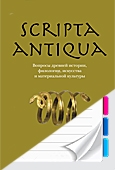Директор Института востоковедения РАН.
Ист.: Scripta antique. Вопросы древней истории, филологии, искусства и материальной культуры: альманах. Том V. 2016. Москва: Собрание, 2016.

Scripta antique. Вопросы древней истории, филологии, искусства и материальной культуры. Том V. 2016. Москва: Собрание, 2016. С. 167–189.
В статье рассматриваются особенности Высшей йоги (“Anuttarayoga-tantra”) на примере «Тантры тайной общины» (“Guhya-samājatantra”), а также культурные аспекты возникновения тантрического буддизма в середине I тыс. н.э. «Культурная археология» помогает значительно глубже понять особенности духовных течений в древней и раннесредневековой Индии.
V.P.Androsov (Moscow). VAJRAYĀNA AND “GUHYA-SAMĀJA-TANTRA”
Article is devoted to features of tantras of the Highest yoga (Anuttarayoga-tantra) on example of the “Guhya-samāja-tantra” (“The Tantra of a secret community”). The studies of Western Buddhologists are worked out, as a rule, in cooperation with the Tibetan teachers, experts on traditional reproduction of Buddhist rituals, texts and practices. The author, not doubting the advantages of such an approach, raises a question whether it’s possible now to make an “excavation” of that cultural layer of the Indian civilization of the middle of the first millenium of our era when large tantrical spiritual movement has arisen in the Buddhism, Hinduism and partly Jainism. The question is also is, in what measure this method which would be possibly called “archeology of culture” is applicable for reading “Guhja-samāja-tantra”, could modern scientists understand the subject of the text, the theory and the practice, without leaning (or nearly without leaning) Tibetan legends and knowledge? The article is accompanied by the translation of the third chapter of the tantra in question from Sanskrit on Russian.